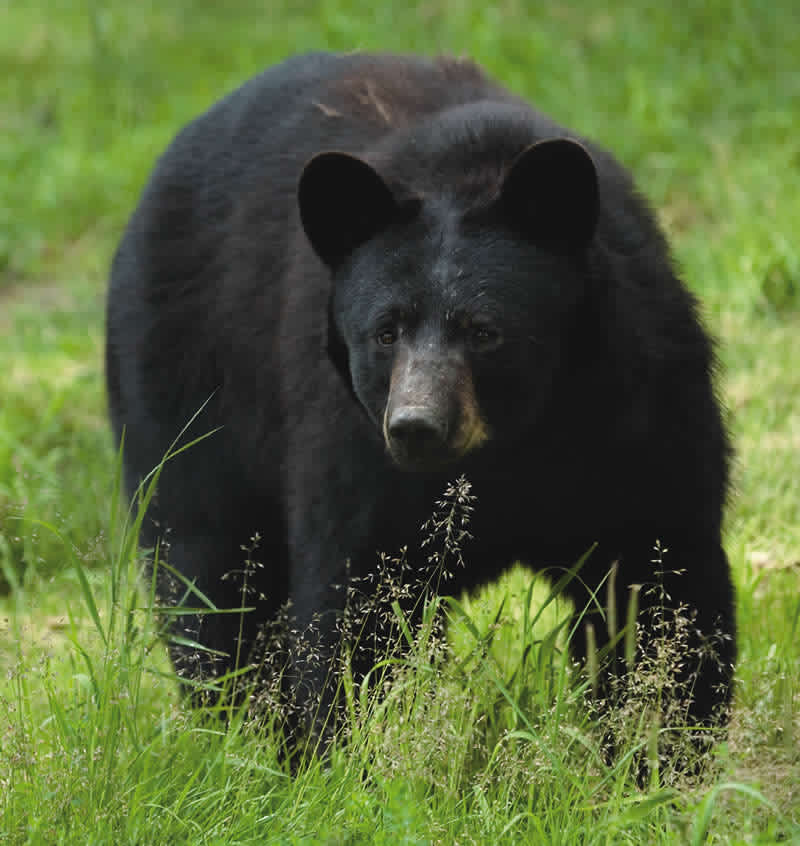New Jersey Bear Season Opens Amid Concerns about Aggressive Encounters
OutdoorHub Reporters 12.09.14

New Jersey’s weeklong black bear hunting season began just before sunrise on Monday, and thousands of hunters eagerly descended on the six northern Jersey counties where the hunt takes place. This year’s hunt, the fifth after New Jersey reopened bear hunting in 2010, carries with it some tension. It was only a few months ago that a 22-year-old college student, Darsh Patel, was chased and killed by a bear in the Apshawa Preserve in what wildlife officials believe may have been a predatory—as opposed to defensive—attack. The incident is indicative of New Jersey’s growing number of bear complaints. Despite few reports of aggressive bears in 2012 and 2013, New Jersey residents are reporting more and more aggressive bear encounters this year.
According to the New Jersey Department of Environmental Protection (DEP), the bear population in North New Jersey has actually declined from 3,400 bears in 2010 to between 2,200 and 2,500 currently. Fewer bears means fewer hunters, and sportsmen harvested only 251 black bears in 2013, a dramatic decrease from the 592 taken in 2010’s inaugural hunt. In the past five years, hunters harvested an estimated 1,600 bears from New Jersey forests, and officials said that it is a sign that the DEP’s five-year bear management program was working.
“The initial results of this coordinated, statewide black bear plan are encouraging,’’ said Dave Chanda, director of the State Division of Fish and Wildlife, in a press release. “But we must continue this effort to further reduce bear and human encounters and farm and property damage, while easing public concerns about black bears.”
The number of complaints regarding aggressive bears, or “Category 1 bears,” seems to support that notion. The Associated Press reported that Category 1 bears, which are animals deemed a threat to public safety and property, fell from a high of 235 in 2010 to 129 in 2013. However, the number of home entries and livestock killing rose in 2014.
So why are encounters increasing when the bear population has dropped by about a third? According to some biologists, the bears may be moving into areas where hunting is not allowed, like residential areas, state parks, and preserves like Apshawa.
“As a general rule we have slowed the population, but that doesn’t mean we are done,” said Kelcey Burguess, a biologist with the Division of Fish and Wildlife’s black bear project. “We need to make sure we’re managing the population on more of a statewide level. The hunt is effective, but it isn’t effective as it could be.”
The result is a nearly 55 percent increase in Category 1 bears this year, which are usually euthanized by the DEP rather than trapped and relocated. Having bears move into areas with more people can also be dangerous to motorists as well. According to NJ.com, 79 bears were already killed this year due to automobile accidents.
Some animal advocacy groups say that the recent uptick in bear encounters, including September’s deadly attack, indicate that the bear hunts are not working to control the population. DEP officials, however, point to the numbers as a sign of the program’s success. In addition, scientists from the Division of Fish and Wildlife will be meeting next year to the reassess the situation and develop a population model for the entire state, not just the northern counties. Public education on trash control and a bear feeding ban is also part of the state’s bear management plan.
“We expect another safe, professionally managed black bear hunt, which is just one component of New Jersey’s comprehensive effort to manage our black bear population,” said DEP Commissioner Bob Martin. “In an effort to properly manage our ecosystem, we are seeking to reduce the number of black bears to a sustainable number in Northwest Jersey, while improving public safety by reducing bear encounters with our residents.”

